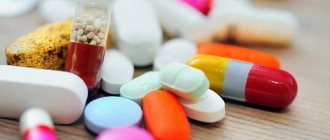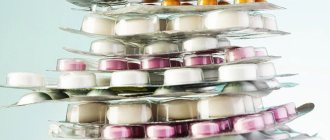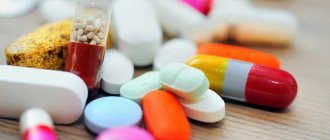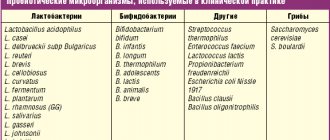What are probiotics for?
- Probiotics such as Lactobacillus spp., Bifidobacterium spp. and Saccharomyces boulardii, are strains of living microorganisms that are components of the normal intestinal microflora and are largely responsible for our health. They are obtained from food or in the form of medications.
- Probiotics improve antibacterial therapy because they combat microbial adhesion and the growth of pathogenic flora, have immunomodulatory properties, and improve the integrity of the intestinal barrier. In patients treated with antibiotics, probiotics help restore the microbial flora and increase treatment tolerance.
- Probiotics should be used cautiously, in consultation with a doctor, especially in premature infants and patients with severe immunodeficiency
Types of antibiotics
There are hundreds of different types of antibiotics, but most can be roughly divided into six groups:
- Penicillins are widely used to treat various infections: skin, respiratory system, urinary tract.
- Cephalosporins are used to treat a wide range of serious infections, including sepsis and meningitis.
- Aminoglycosides are prescribed mainly in hospitals (outpatient - under the strict supervision of a doctor) for the treatment of severe pathologies. This group of drugs can cause serious side effects: hearing loss and kidney pathology. Aminoglycosides are used, usually in the form of injections or eye/ear drops.
- Tetracyclines are used to treat a wide range of infections: skin (severe forms of acne and rosacea), urogenital.
- Macrolides are prescribed for infectious processes in the lungs and/or as alternative drugs for patients with allergies to penicillin. They are also used to treat penicillin-resistant strains of bacteria.
- Lincosamides are effective in the treatment of infectious bone lesions.
When is a probiotic prescribed?
Taking antibiotics is necessary for treatment (if prescribed by a doctor). But antimicrobial drugs kill all bacteria. Thus, along with pathogens, the drugs kill the good bacteria in the gut, leaving the body defenseless against pathogens such as the fast-growing Candida albicans. After a course of antibiotics, this yeast can quickly become dominant in the small intestine.
Taking probiotics before, during, and after a course of antimicrobials can help maintain the balance of microorganisms in the digestive system. Many Candida sufferers doubt this, thinking that antibiotics will quickly kill off the good bacteria in probiotics. However, research has shown that probiotics are extremely effective during antibiotics.
How to take antibiotics correctly
It is important to take antimicrobial medications correctly to prevent the development of resistance, a condition where a strain of bacteria no longer responds to treatment with one or more types of antibiotics. Therefore, self-medication in the case of antibiotics is not just harmful to health - it is dangerous!
Only a doctor should decide on the advisability of prescribing an antimicrobial agent, select a specific drug, dosage and determine the duration of use.
Antibiotics should be used strictly in the doses prescribed by the doctor. Oral forms (tablets, capsules, syrups) are drunk in accordance with the recommendations prescribed in the instructions: before/after meals. You cannot reduce or increase the dosage on your own: a low level of the active substance in the blood will not have the desired effect, and an excessive one will increase the risk of side effects.
It is very important to drink the entire prescribed course of antibiotics, even if the temperature has subsided and your health has improved. Stopping use risks the emergence of resistant forms of bacteria. You cannot skip taking the next dose: the effect of the medicine must be continuous, that is, one portion of the substance “clings” to another. Interruptions in admission are unacceptable. If you accidentally miss one dose, drink the medicine “as soon as you remember”, and then continue the course as usual. Do not take a double dose to make up for a missed dose.
Features of therapy when taking antibiotics
To maximize the benefits of probiotics, space your intake with your antibiotics by at least two hours. In this case, less “good bacteria” will be killed by antibiotics in the intestines.
There is a lot of confusion about whether probiotics should be taken before, during, or after meals. Luckily, a 2011 study looked at exactly this question. The researchers created a synthetic digestive system in the laboratory and tested it in different scenarios using a commercial probiotic. They found that probiotics survived best when taken with meals, or 30 minutes before meals. When you take these medications or foods, just be sure to drink or eat them with or just before your next meal.
Side effect of antibiotics
A course of strong antibiotics can kill virtually all the bacteria in your digestive system, eliminating competition and clearing the way for fast-growing pathogenic flora to immediately try to fill the gap. Taking probiotics during antibiotic treatment can help slow the growth of pathogens by replenishing the gut with beneficial, healthy bacteria. Beneficial bacteria maintain balance and reduce the side effects of antibiotics. A 2008 study published in the Journal of Clinical Gastroenterology found that probiotics significantly reduced diarrhea in patients taking antibiotics.
If you do need to take antibiotics, a course of good probiotics will help and will provide two types of benefits: relief from the side effects of antibiotics, and protection of microflora balance in the long term.
Use of dietary supplements for therapy
- Probiotic preparations in liquid, capsules, powder or tablets are not a medicine. These are biologically active food supplements that can establish balance and bring the body into a normal state. Therefore, such drugs do not require a prescription.
- In any case, if the doctor, when prescribing antibiotics, did not suggest that you drink live bacteria, you should ask him the appropriate question. But which probiotics are best?
- It is believed that liquid probiotics are better because they take live bacteria, not frozen or put into a dormant state, allowing you to start working on restoring your gut flora immediately. This is especially important when it comes to the health of a child. The drug must contain strains of lacto- and bifidobacteria, which are what the gastrointestinal tract requires after treatment with antibiotics.
Probiotics for the prevention and treatment of antibiotic-associated diarrhea in children
In 2022, the World Gastroenterological Organization formulated a number of requirements for manufacturers of commercial probiotic preparations, according to which probiotics must:
- Be identified by species and strain.
- Be alive, as well as acid-resistant or have a special method of delivery to attachment sites.
- Provide a sufficient number of bacteria at the end of the shelf life - 106-109, reach the attachment sites in the required quantities.
- Demonstrate efficacy and safety in placebo-controlled clinical trials6.
When choosing a probiotic for the prevention and treatment of AAD, preference should be given to probiotic drugs that meet all the criteria of the World Gastroenterological Organization.6 When choosing a drug, one should take into account not the number of strains included in its composition, but the specificity of the strain recommended for a particular pathology, but also the effectiveness and safety of the drug, demonstrated in clinical studies.7 Bifiform is a drug that is indicated for the treatment of AAD, containing typed strains, each of which is quantified.8 The composition of the drug includes Enterococcus faecium ENCfa-68 in a dose of at least 1× 107 CFU and Bifidobacterium longum BB-46 in a dose of at least 1×107 CFU, which act in the small and large intestine, and the two-layer capsule protects bacteria from the aggressive environment of the stomach.8 Bifiform does not contain lactose and can be recommended even for children with lactase deficiency. 8
In studies, oral administration of a bacterial preparation containing Enterococcus faecium ENCfa-68 (SF-68) resulted in the restoration of intestinal microflora or prevented its depletion during antibacterial therapy. This strain of enterococcus can counteract enteric pathogens through biological competition, environmental acidification (lactic acid production), production of bioactive substances (bacteriocins) and immunomodulatory effects9,10. Bellomo et al. in their study demonstrated the high effectiveness of Enterococcus faecium ENCfa-68 (SF-68) in the treatment of acute diarrhea in children aged 1 month to 9 years. Diarrhea resolved earlier in the group of children receiving Enterococcus faecium ENCfa-68 (SF-68)11. According to Russian scientists, the use of the drug Bifiform in children with diarrhea and other dyspeptic disorders against the background of antibacterial therapy makes it possible to stop these adverse events on average by the third day from the start of treatment.12
In conclusion, I would like to emphasize that even rational antibacterial therapy does not eliminate the risk of developing antibiotic-associated diarrhea. When prescribing ABS, it is necessary to add probiotics to therapy, which reduce the risks of its development. When choosing a preobiotic, preference should be given to drugs containing strains with proven clinical effectiveness against AAD.
Find out more
Bibliography:
Zakharenko S.M., Andreeva I.V., Stetsyuk O.U. Adverse drug reactions from the gastrointestinal tract and antibiotic-associated diarrhea when using antibiotics in outpatient practice: prevention and treatment. Clinical Microbiology and Antimicrobial Chemotherapy. 2019;21(3):196–206. Access mode: https://cmac-journal.ru/publication/2019/3/cmac-2019-t21-n3-p196/cmac-2019-t21-n3-ppdf. 2. Giannelli FR Antibiotic-associated diarrhea. 2017;30(10):46-47. DOI: 10.1097/01. JAA.0000524721.01579.c9.3. Videlock E., Cremonini F. Meta-analysis: probiotics in antibiotic-associated diarrhea. Aliment Pharmacol Ther. 2012;35(12):1355–1369. doi: 10.1111/j.1365-2036.2012.05104.x.4. Martin H. Floch. Recommendations for Probiotic Use in Humans—A 2014 Update // Pharmaceuticals (Basel). Vol. 7(10). P.999–1007. Published online 2014 Oct 10. doi: 10.3390/ph7100999 PMCID: PMC4210857.5. Shen NT, Maw A., et al. Timely Use of Probiotics in Hospitalized Adults Prevents Clostridium difficile Infection: A Systematic Review With Meta-Regression Analysis. Gastroenterology. 2017;152(8):1889-1900. DOI: 10.1053/j.gastro.2017.02.003.6. Global guideline. Probiotics and prebiotics. URL: www.worldgastroenterology.org/UserFiles/file/guidelines/probiotics-and-prebiotics-russian-2017.pdf. 7. Stavropoulou E, Bezirtzoglou E. Probiotics in medicine: A long debate. Front Immunol. 2022 25;11:2192.8. Instructions for medical use of the drug Bifiform. RU P No. 013677/01 dated 06/08/2011.9. Wunderlich P.F., Braun L., Fumagalli I. et al. Double-blind report on the efficacy of lactic acid-producing Enterococcus SF 68 in the prevention of antibiotic-associated diarrhoea and in the treatment of acute diarrhoea. J Int Med Res 1989;17(4):333-338.10. Ermolenko E.I. Enterococcal bacteriocins: problems and prospects for use. Bulletin of St. Petersburg University. Ser. 11. 2009. Issue. 3.11. Bellomo et al. A controlled double-blind study of SF68 strain as a new biological preparation for the treatment of diarrhoea in pediatrics. Curr Ther Res 1980:28(6).12. Valieva S., Alekseeva E., Bzarova T. et al. Evaluation of the effectiveness of the drug “Bifiform” in patients with juvenile arthritis under antibacterial therapy. Issues of modern pediatrics 2008;7(4):109-114.
The material is intended for employees of the healthcare system. JSC "GlaxoSmithKline Healthcare" Russian Federation, 123112, Moscow, Presnenskaya embankment, 10, room III, room 9, floor 6. Tel.. The trademark belongs to or is used by the GlaxoSmithKline Group of Companies.
PM-RU-BIF-21-00051
As an advertisement
The effect of antibiotics on intestinal microflora
Almost any broad-spectrum antibiotic is a “sociopathic” substance. It kills not only pathogenic, but also beneficial microflora, resulting in dysbacteriosis.
Intestinal dysbiosis manifests itself in the form of:
- discomfort, unpleasant sensations in the abdomen;
- belching, bad taste in the mouth, bad breath;
- stool disorders (often diarrhea, but there may also be constipation), increased gas formation;
- intolerance to foods that were previously consumed without problems;
- constant feeling of fatigue, drowsiness;
- allergic reactions, vitamin deficiencies, etc.
All these troubles are associated with the death of beneficial microflora - the digestive organs, deprived of their “helper residents,” cannot function normally.
What is microflora?
Microbiota or microflora of the human body are all microorganisms that live with humans in symbiosis, mutually beneficial “cohabitation”. The microbiota of different organs and systems differs in composition: the microflora of the oral cavity is considered separately, the skin separately, the bile ducts, vagina, etc. separately.
The most numerous and diverse intestinal microflora
. It consists of bacteria, fungi, yeast and other microscopic “residents”, the balance between which is extremely important for the health of the entire organism. There will be no balance - the gastrointestinal tract will not be able to fully function, absorbing all the necessary substances from food.
The number of microorganisms in the human intestine reaches 50 trillion, and their total weight is 3 kilograms
.
In the intestines of a healthy person, the microbiota is distributed as follows:
- 1% – opportunistic microflora (clostridia, staphylococci, some fungi);
- 99% – beneficial microflora (lactobacteria, bifidobacteria, aerobes, enterococci, E. coli, etc.).
So, if this healthy balance (eubiosis) “sways” towards pathogenic microorganisms, and their number exceeds 1%, dysbiosis
.









